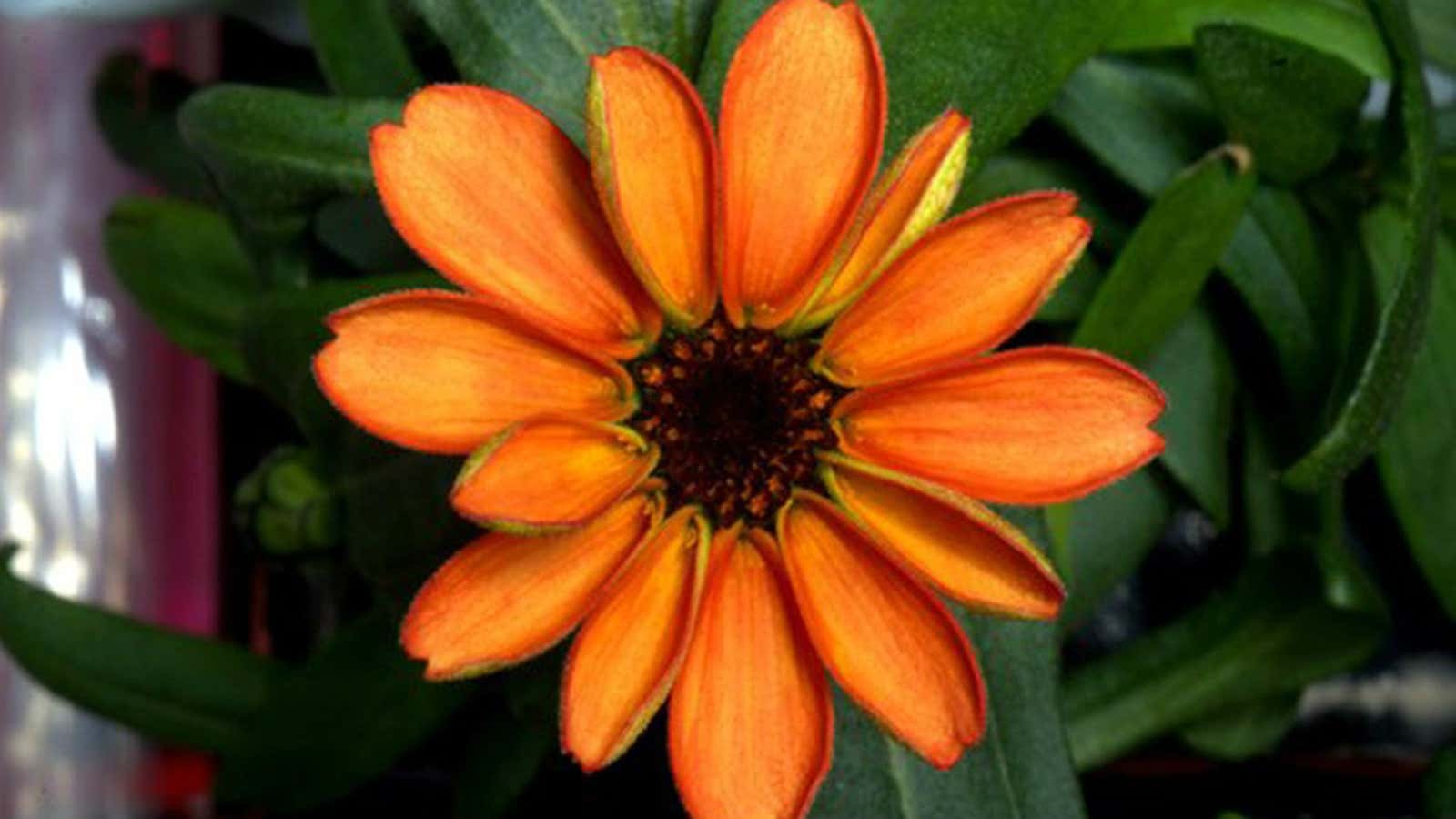A brightly colored flower is the first to bloom in the International Space Station.
The zinnias were chosen by NASA not for their beauty, but to “help scientists understand how plants flower and grow in microgravity.” ISS astronauts made headlines last year after successfully growing lettuces on the ISS, but the zinnias proved to be a bit more difficult.
“The zinnia plant is very different from lettuce,” Trent Smith, the veggie project manager, notes in a NASA blog. “It is more sensitive to environmental parameters and light characteristics. It has a longer growth duration between 60 and 80 days. Thus, it is a more difficult plant to grow.”
The zinnias began to exhibit telltale signs of plant stress—water droplets on the leaf edges and curling leaves—two weeks into their growth period. This was as a result of inhibited airflow in the plant growth facility and excess water. Astronauts aboard the ISS then noticed mold growing on them.
The team was able to nurse the plants back to health, thanks in part to US astronaut Scott Kelly, who happily took on the role of “autonomous gardener.” Thanks to Kelly’s “heroic holiday gardening efforts,” the two remaining plants were able to thrive and bloom.
While the plants have the potential to be an important source of food, researchers quickly realized there are also psychological benefits to growing plants in space. “In future missions, the importance of plants will likely increase given the crews’ limited connection to Earth,” said Alexandra Whitmire, scientist at NASA Human Research Program (HRP).
The zinnias are but a small step towards what we saw in The Martian—growing food for any future journeys to Mars.
